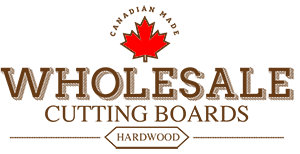Blog
The Perfect Bread-Cutting Board: Why It Is a Must in Every Kitchen
The bread-cutting board is that amenity for any kitchen that combines function, aesthetic appeal, and durability all in one. If one bakes his or her own bread or delights in fresh, store-bought artisan loaves. Then having a dedicated bread-cutting board can enhance the experience and protect the counter tops. This article will look at why bread cutting boards are necessary, how to select the right one, and the long-term benefits that come from investing in quality materials such as maple.
Why a Bread-Cutting Board is Important
Depending on the wrong surface to cut bread, crumbs can go anywhere, and slices might be less neat. A bread-cutting board remedies these issues. Most bread-cutting boards have grooves or crumb catchers to reduce mess in your kitchen. These boards are also specifically designed to handle the texture and hardness of bread, unlike regular cutting boards, which may not offer just the same benefits.
Bread is also weird because of its airy texture; when you cut into it, crumbs might gather more than with other foods. Breadboards designed with special features in place, such as a raised edge or slotted design, can make for better containment of these crumbs for a smoother experience in cutting the bread. Secondly, a good cutting board for bread prevents your knives from getting dull much quicker, especially compared to harder surfaces such as granite counter tops.
How to Choose the Best Bread Cutting Board: What to Look For
When it comes to finding the best bread-cutting board in your kitchen, there is more to know than just a piece of wood with grooves cut into it. Among the factors to consider when selecting the best bread-cutting board includes material, size, design, and durability of the board.
Material Matters
The type of material your bread cutting board is made from can determine its functionality and how long it lasts. Of course, the best types of bread-cutting boards are those made from wood, particularly from the maple tree. Maple wood is highly resistant to knife marks, hence serving its purpose very well in cutting crusty loaves of bread. It’s also a pretty dense wood that does not absorb much moisture, something important when you think that bread may leave behind crumbs.
On the other hand, plastic cutting boards may be easier to clean but do not offer the long-term durability that wood does. Plastic, being a softer material, is more prone to knife grooves, which can harbor bacteria over time. Besides, it does not have the same aesthetic appeal of a beautiful maple board sitting on your counter.
Another great alternative for a wood bread-cutting board is Cherry; it adds a rich colour to your kitchen and will be somewhat softer than maple. These two types of woods are soft on your knives and relatively easy to care for, giving them the edge over materials like glass or stone, which can be harsh on blades and more difficult to clean.
Size and Design
Bread cutters could come in a different size, so keep in mind the normal type of bread that you buy or bake. If you are the type who normally cuts baguettes, then a long, thin board would be very functional. And if your loaves are large and round, then you may need a wide board that offers some extra space for slicing and serving.
That is why design features, such as crumb-catching grooves, prove to be quite useful. These grooves save you from digging through your counter for crumbs, hence they help cut down cleanup time. Some bread-cutting boards have integrated trays that catch the crumbs and can easily be pulled out for cleaning.
If you love to serve bread to dinner guests, a nicely designed bread cutting board can double as a serving platter. A stunningly made wooden board adds a touch of rustic charm to your table and can easily be used both functionally and decoratively when entertaining guests.
